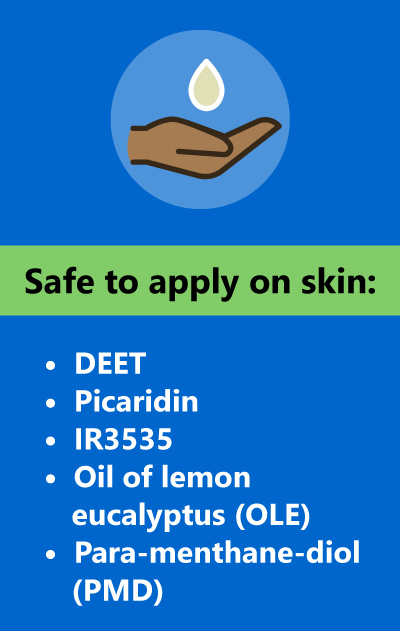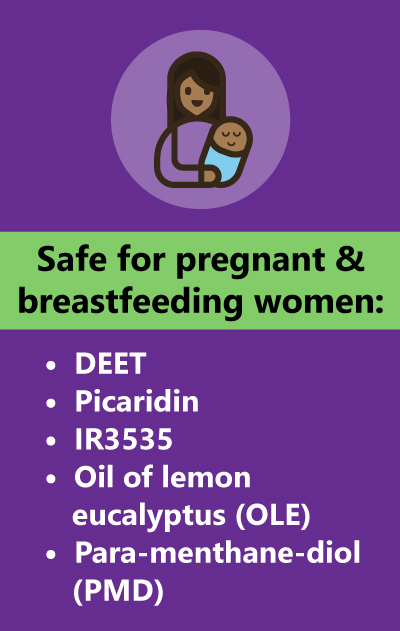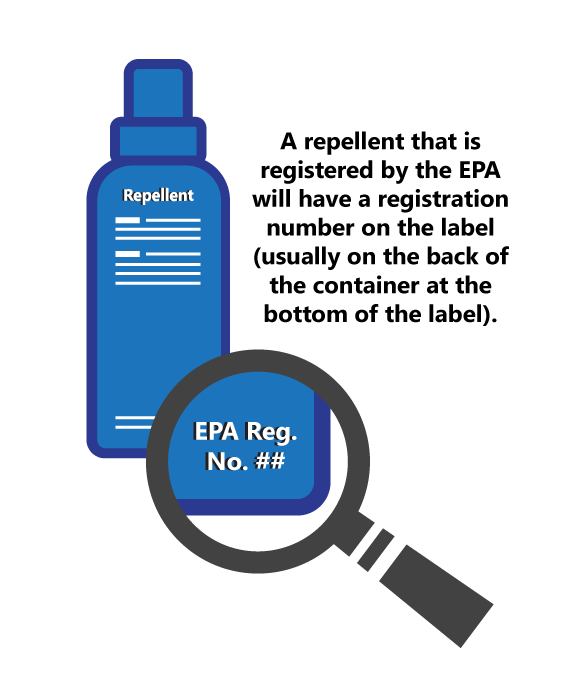EPA-Registered Repellent Ingredients
The U.S. Centers for Disease Control and Prevention (CDC) strongly suggests using insect repellents with ingredients registered by the U.S. Environmental Protection Agency (EPA). The EPA must register most skin-applied repellents before they can be sold to be sure that the active ingredients in the repellents have been "evaluated and approved for human safety and effectiveness when applied according to instructions on the label" (EPA, 2022). This means the active ingredients in EPA-registered repellents work to prevent insect bites and are not harmful when used as directed.


EPA-registered repellents containing one of the active ingredients listed below are safe to use and work best to protect against insect bites when used according to label directions. The list below includes EPA-registered active ingredients that are most common in repellents found in stores or available online. The EPA has registered other active ingredients (including 2-undecanone), but they are not as commonly found.
DEET
DEET (chemical name: N,N-diethyl-meta-toluamide) is a common, synthetic (or human-made) active ingredient found in many insect repellents.
Here's what you need to know about
DEET:
- Apply directly to skin
- Safe for use on pregnant women and children when used as directed
- Products containing 20-30% DEET work best to prevent mosquito and tick bites and typically provide protection for many hours
- Products with very high amounts of DEET (over 50%) will not work any better or longer to protect you
Picaridin

Picaridin (KBR 3023) is a synthetic active ingredient similar to the
natural compound piperine, which comes from black pepper.
Here's what you need to know about
picaridin:
- Apply directly to skin
- Safe for use on pregnant women and children when used as directed
- Doesn't have a strong smell
IR3535
IR3535 (chemical name: 3-[N-Butyl-N-acetyl]-aminopropionic acid, ethyl ester) is a synthetic active ingredient similar to a
naturally occurring amino acid (PDF).
Here's what you need to know about
IR3535:
- Apply directly to skin
- Safe for use on pregnant women and children when used as directed
- Has been used widely in Europe
Oil of Lemon Eucalyptus
Oil of lemon eucalyptus (OLE) (chemical name: p-Menthane-3,8-diol) is a naturally derived active ingredient from the lemon eucalyptus plant. OLE is
NOT the same as pure, essential oil of lemon eucalyptus, which is not recommended for use as repellent.
Here's what you need to know about
OLE:
Para-menthane-diol
Para-menthane-diol (PMD) (chemical name: p-Menthane-3,8-diol) is the synthetic version of oil of lemon eucalyptus.
Here's what you need to know about
PMD: